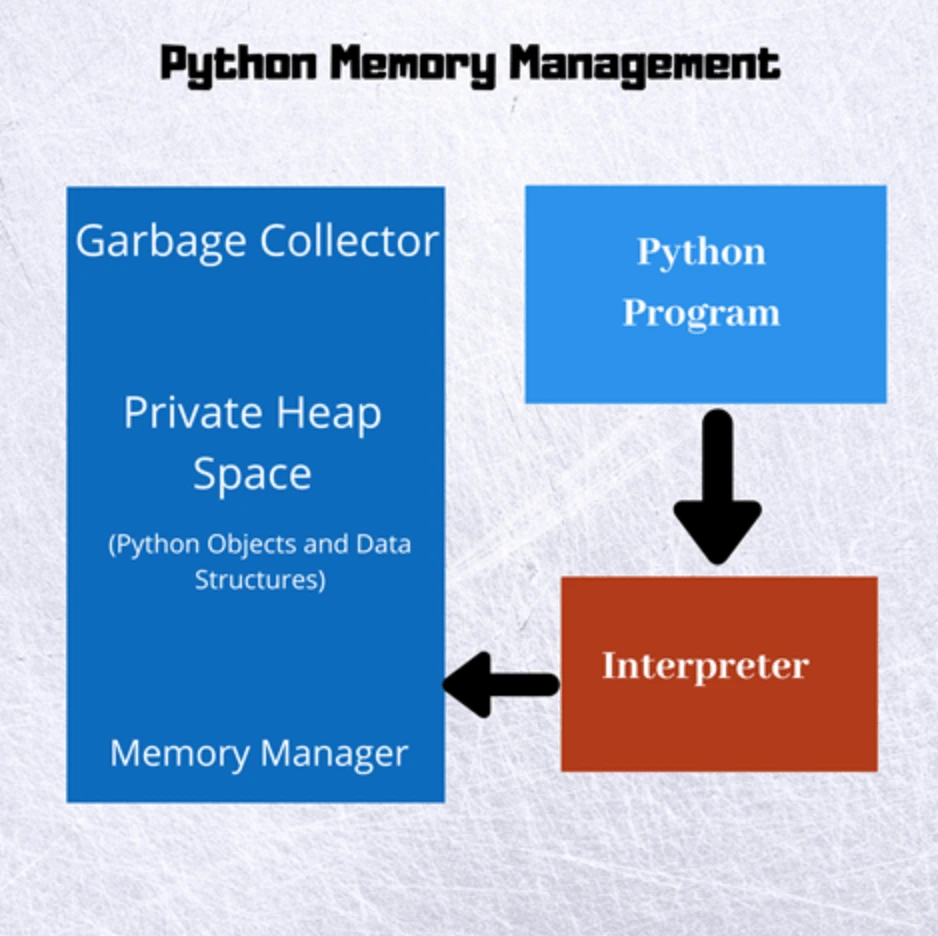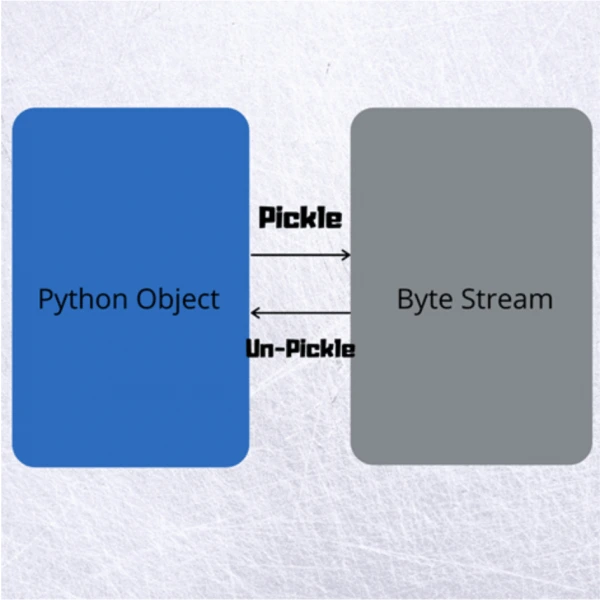Python Interview Questions and Answers 2023

Python today is one of the most important languages to learn. Top-rated technologies such as Machine Learning, Artificial Intelligence, etc benefit from the simplicity and readability of the language. Moreover, programs coded using the language are human-readable and also understandable. As a result, Python programming is a crucial skill both for the freshers and the experienced developers.
Our list of Python interview questions covers all the basic topics followed by the common questions, helping you prepare for the interview. Without wasting much time, let's start with the frequently asked Python interview questions.
Python Interview Questions: Basic
- What is Python and the benefits of using it?
- What is PEP 8?
- How is memory managed in Python?
- What is PythonPATH?
- State the difference: “func” vs “func()”?
- What is the Lambda function?
- How to define a function in Python 3?
- Explain different functions in Python?
Data Types, Variables, Basic Operators
- Explain local and global variables in Python?
- How to avoid a newline when using multiple print statements?
- What is the default data type of the input() method?
- What is an unpacking feature in Python?
- How is range different from range?
Conditional Executions, Loops, List processing, Operations
- How do you remove the last object from a List?
- How will you reverse a List?
- Does Python support statements in Lambda forms?
- What is slicing in Python?
- What does [::-1] do?
- How to generate random numbers?
- What advantage do NumPy arrays have over nested Python Lists?
- How do you achieve multithreading in Python?
Functions, Tuples, Dictionaries, Data Processing
- What is a dictionary in Python?
- What are the differences between List and Tuple?
- Can you remove value from a Tuple? Yes/No, why?
- How to convert a List to a Tuple?
- How does Python support arguments within a function?
- How to sort a numerical List in Python?
- What are decorators in Python?
Modules, Packages, String, List Methods, Exceptions
- What are Python modules?
- Enlist the modules present in Python by default?
- Different ways of importing modules in Python?
- What is pickling and unpickling?
- How can you share global variables across modules?
Basic Python Interview Questions
1. What is Python and the benefits of using it?
Python is a high-level, general-purpose scripting language. Unlike other programming languages with syntactical limitations, Python allows developers to code in the simplest way. Python codes are readable and support both functional, and structured methods of programming.
Most importantly, Python is versatile, well-structured, and quick to process. It has a vast repository of tools and libraries that facilitates the development of applications of various kinds.
Moreover, Python is open-source and compatible with third-party package integrations, all of which add to code modularity. The presence of a vibrant community of developers further makes it easier for developers to code and build applications.
2. What is PEP 8?
PEP 8 Python is the style guide for Python and stands for Python Enhancement Proposal. It enlists all of the standards and best practices every programmer must follow when writing a Python code. Starting with the naming conventions to spacing norms, it covers all. The main intent of having PEP 8 Python is to ensure that the code is readable, easy-to-understand, and of high-quality. Moreover, Python Enhancement Proposal enlists new Python features to keep developers updated.
3. How is memory managed in Python?
Memory management in Python has a heap space that accommodates all of the data structures as well as the objects created in Python. Heap space is a private storage, therefore, the programmers cannot access them. However, Python does provide a set of tools that helps the developer work on the space, ensuring code reliability. In addition to this, Python has a built-in garbage collector that swipes off the unused memory time after the time.

4. What is PythonPATH?
Every time you run the Python interpreter, it creates a List containing the directories to search modules. Pythonpath is an environment variable that guides the interpreter when locating a module or a package. In other words, Pythonpath has source code and source library directories. Use the Export Pythonpath command to export variables and direct the interpreter to look at specific modules.
5. State the difference: “func” vs “func()”?
In Python, to pass a function as an argument to the identity decorator function, we use func. However, to call a function with the name func, we use the func() keyword.
6. What is the Lambda function?
Lambda function in Python is an anonymous function that can take as many arguments however, it has only one expression. The function doesn't have a name and hence, the keyword Lambda starts the function definition.
Syntax for Lambda function in Python:
Lambda x1, x2 : expression
Example to understand how to use Lambda function in Python:
Lambda a : a + 4
Note: Lambda function in Python does not have a return statement as the function body is automatically returned.
Lambda provides the ease to pass a function as a parameter to another function. Consequently, it is helpful when the programmer wishes to create a one-time, single-use function.
Another example on how to use Lambda function in Python is:
def triplet(x): return Lambda n : n * x final_score = triplet(3) print(final_score(11)) Output: 33
7. How to define a function in Python 3?
Functions are a group of statement(s) that perform the same task. Every language has a specific syntax to define a function. To define a function in Python 3:
def func_name(argument): """docstring""" statement(s)
where
def: keyword used to specify that the following lines of code are part of a function.
func_name: Unique identifier to differentiate between functions.
argument: parameters passed when calling a function.
"""docstring""": To state the purpose of the function.
statement (s): Python code that performs a specific task.
A return statement returns a value to the calling function, and is optional.
Example: Create a user defined function welcoming user to HackerTrail
def my_func(company_name):
"""
This function welcomes reader to
HackerTrail
"""
print("Welcome to, " + name + "!")
Calling function
>>> my_func('HackerTrail')
Welcome to HackerTrail!
8. Explain different functions in Python?
We can segment functions in Python into two types.
- Python built-in functions are already defined in Python and used directly wherever needed.
- User-defined functions: Developers code specific functions to meet a certain requirement.
The commonly used Python built-in functions are:
- Split function in Python - The split function in Python returns words/strings after splitting the master word. While writing it, the user will specify the separator.
Syntax:
str.split(separator, maxsplit)
where,
- str is the master string
- split is the keyword used for the function
- separator is a unique character that determines how to split the string
- maxsplit: is the split count
Example:
str = 'Find the best Python Interview Questions here' # Splits at space print(str.split()) Output: str = 'Find, the, best, Python, Interview, Questions, here'
Join function in Python
Join function in Python combines different iterable objects and converts them to a string.
Syntax of Join function in Python
string.join(iterable)
where
- String is the separator
- Join is the keyword
- Iterable is the List of objects
Example:
my_itr = ("Python", "Interview" , "Questions")
my_str = " ".join(my_itr)
print(my_str)
Output: Python Interview Questions
Random function in Python
Returns a random number between the range of 0.0 and 1.0. Note that the number returned is a floating-point number.
import random print(random.random()) Output: 0.23532244
Sort function in Python
Helps sort a List quickly. Conventionally, Python sort is increasing (ascending) by nature.
Syntax: Sort Function in Python
my_List.sort(reverse=True|False, key=my_Func)
- List is the name of the List that you wish to sort.
- sort is the keyword.
- reverse is an optional parameter. To sort in descending order, set reverse to True.
- key is a special criterion that influences the sorting operation.
Example 1:
name = ['Jack', 'Ana', 'Rosy'] name.sort() Note: The above would sort the List in ascending order of the alphabet. Output: Ana, Jack, Rosy
Example 2:
Function that sorts the List based on the length of each name.
def len_ List(l): return len(l) name = ['Jack', 'Ana', 'Christie'] name.sort(reverse=True, key=len_ List) Output: Ana, Jack, Christie
Count function in Python
The count function in Python returns the occurrence of an object in a List.
Syntax:
List.count(value/object)
Example:
num = [1, 1, 2, 7,4, 1, 9, 7, 1] x = num.count(1) print (x) Output: 4
Strip function in Python
By default, the strip function in Python removes all of the spaces/characters from a string. In other words, the count or order of the character doesn't matter.
Syntax:
strip () strip (characters)
Example 1:
str: " HackerTrail guide to Python Interview Questions " s = str.split() print(s)
Output: HackerTrail guide to Python Interview Questions
Example 2:
str: " xhy Python Interview Questions yxh….. "
s = str.split(" xhy.")
print(s)
Output: Python Interview Questions
Replace function in Python
To replace a specific phrase with another in a given text or string.
Syntax:
string.replace(oldvalue, newvalue, count)
where
- replaceis the keyword
- oldvalue is the existing phrase
- newvalue is the new phrase
- count specifies the number of times you want to replace oldvalue with newvalue
Example:
str = "Zero plus three is three."
x = str.replace("three", "five")
print(x)
Output: Zero plus five is five.
Data Types, Variables, Basic Operators
9. Explain local and global variables in Python?
Global variables are variables declared outside a function. However, local variables are declared within a function. The major difference between local and global variables in Python is their scope. To clarify, the scope of a local variable is limited to the function in which it is declared, global variables can be edited/modified both inside and outside a function.
Let us run an example to understand how to declare global variables in Python.
Example: Defining local and global variables in Python var = "Hi! I am outside the function " def func_f(): global var v = "Hi! I am inside the function" print(var) print(v) func_f() Output: Hi! I am outside the function Hi! I am inside the function
10. How to avoid a newline when using multiple print statements?
The print statement in Python always ends with a newline. To clarify, the interpreter prints the output in two different lines for consecutive print statements. However, there are times when you want to print statements in the same line. Depending upon the Python version you are using, the solution would differ.
To print in Python without a newline: Version 2
For Python version 2, you simply need to add a ',' at the end of the print statement.
Example: print “Hello! “, print “Welcome to HackerTrail.” print “Find the best Python Interview Questions here” Output: Hello! Welcome to HackerTrail.
To print in Python without a newline: Version 3
For Python version 3 and above, add parameter end="" to print statements in the same line.
Example:
print ("Hola! ", end="")
print ("Welcome to HackerTrail.")
print( "Find the best Python Interview Questions here")
Output:
Hola! Welcome to HackerTrail.
11. What is the default data type of the input() method?
By default, the input () method in Python returns a string.
What is _init_ Python?
As an object-oriented programming language, programmers can create classes and define objects using Python. _init_ Python is a reserved method used to initialize the attributes of the class. In other words, init Python is a class constructor and eases the job of assigning values to class attributes when an object is instantiated.
Example code for init Python:
class Prog:
def __init__(self, my_lang):
self.lang = my_lang
def learn_lang(self):
print('I am learning', self.lang)
l = Prog('Python')
l.learn_lang()
Output:
I am learning Python
12. What is an unpacking feature in Python?
Unpacking in Python is a unique feature that takes a string as the argument. It unpacks all string values to store them as individual variables in a List.
To clarify, packing collects different values in a single variable, but unpacking in Python splits the values into different elements. Find more details here.
13. How is range different from range?
Both range and xrange in Python generate a List of integers. The difference lies in the type where range () returns List object, xrange () returns xrange object.
Learn more and understand the difference between range and xrange in Python.
Conditional Executions, Loops, List processing, Operations
14. How do you remove the last object from a List?
Python has several List-specific methods that perform List operations. One among them is pop(). The pop method allows you to remove the last element from a List in a single operation.
For example:
name = ['Jack', 'Ana', 'Christie'] name.pop()
The above will remove the last element from a List. Pop is the simplest way to remove the last element from a List, however, it isn't the only method.
To remove the last element from List Python, we have two other ways.
1. Del: delete is used to remove an object by specifying the position. The index of the first element is 0 whereas the index of the last element is -1.
name = ['Jack', 'Ana', 'Christie'] name.del[-1]
2. Slicing: Another method to remove elements from a List is slice. You need to specify the index of the element. In other words, indices from where to start removing elements and also the one where to stop needs to be mentioned. To remove the last element,
name = ['Jack', 'Ana', 'Christie'] name = name.slice[: -1]
This will remove the last element from the List.
15. How will you reverse a List?
There are multiple ways to perform Python reverse List operation.
- Reverse Method: The method reverses the element in the existing List.
- Reversed method: Instead of copying the elements in the reverse order to perform Python reverse List operation, use reserved (). This method returns an iterator to iterate across the List in reverse order.
- Python List Slice: Python Slice is another way to reverse a List in Python without reverse function. The method creates a copy of the existing List and stores the elements in a reverse format.
Example for Python List Slice:
Remove a List in Python without reverse function
def Rev(lst): mod_lst = lst[::-1] return mod_lst lst = [10, 11, 12, 13, 14, 15] print(Reverse(lst)) Output: [15, 14, 13, 12, 11, 10]
How is '_' used in the for loop?
'_' in Python states that you are basically throwing away the variable. Technically, '_' are variables
in the for loop.
for _ in range(5):
print('Python Interview Questions')
Here instead of using an i as the iterator variable, developers use _.
16. Does Python support statements in Lambda forms?
Lambda forms allow programmers to build anonymous functions. It can have multiple arguments but only one expression. The syntax allows a single expression, as a result, Lambda forms don't have statements. Also, Lambda forms create a function object returning the same in real-time. Hence, executing multiple statements isn't possible.
17. What is slicing in Python?
Slicing is an excellent solution to extracting elements from a List. The indexes are specified when calling the function. By default, the method requires a start index, and an endpoint. The third argument is passed to specify the steps skipping which the interpreter will slice.
The syntax for Python Slice:
slice(start, end, step)
Example for Python Slice:
my_var = ("H", "A", "C" , "K" , "E", "R", "T", "R", "A", "I", "L" )
final_var = slice (0,4)
print (my_var[final_var])
Output:
('H', 'A', 'C', 'K')
18. What does [::-1] do?
Move through a List in the last to first order. Meaning that it will start at the end and finish on the first element.
19. How to generate random numbers?
The random method is used to generate random numbers in Python. By default, the random method would return a floating-point number generated between the range 0.0 and 1.0.
randint() is the method used to randomly generate integers from a given range.
Example:
import random my_num = random.randint(0,7) print(my_num) Output: 6
20. What advantage do NumPy arrays have over nested Python Lists?
NumPy arrays in Python and nested Python Lists are ways of adding elements in Python.  However, they aren't the same and therein lies the difference between NumPy arrays and Python Lists.
Python Lists support multiple operations like insertion, deletion, concatenation, etc. However, when it comes to executing vectorized, element wise operations, nested Lists aren't efficient. Also, the fact that Lists have elements of various types, they consume a lot of memory required to store the information of element type.
On the contrary, the NumPy arrays in Python is a multidimensional array of elements that belong to the same data type. They allow the execution of element wise addition/multiplication and are faster in their search operation.
21. How do you achieve multithreading in Python?
Multithreading is an important concept in the world of programming. It allows the execution of multiple tasks at the same time without affecting the performance of each other. An important criterion here is that there must not be any interdependency between the tasks to execute in a multithreading environment.
To achieve multithreading in Python 3, you must first install and then import the package or the threading module.
Syntax: Multithreading in Python 3.
import threading from threading import *
Functions, Tuples, Dictionaries, Data Processing
22. What is a dictionary in Python?
Holding a key and a value corresponding to the same, a Python dictionary is an unordered collection of items. The key acts as the index for a particular element.
To define or create a Python dictionary, you need to simply add elements in curly braces and separate them with a comma. Syntax of the declaration:
dictionary_name = { key1:value1, key2:value2,....}
Note: The value-added can be of any data type however the key has to be unique and immutable ( number, string, etc)
23. What are the differences between List and Tuple?
Both List and Tuple in Python belong to the class of data structure and are defined to store objects in a given order. While the two have their share of similarities, they differ dramatically.
Difference between List and Tuple:
- Starting with the type, Lists are of type List and Tuples are of type tuple.
- The syntax of the two is also different. To declare and define a List, we use [], whereas to define Tuple, () are used.
Example: List and Tuple in Python
list_1 = [1, 2, 3, 4] tup_1 = (1, 2, 3, 4)
Another difference between List and Tuple is their mutability. Python Lists are mutable, and so they can be modified or edited. However, Python tuples are immutable. It is not possible to change a tuple after declaration. If you try to make changes to a Tuple, the Python interpreter returns an error.
24. Can you remove value from a Tuple? Yes/No, why?
Python Tuples are immutable by nature. Removing a value using a direct operation isn't possible and will throw an error. However, you can convert a Tuple to a List, remove the element, and convert it back to a Tuple.
25. How to convert a List to a Tuple?
Use the tuple() method to directly convert a predefined List to type Tuple.
Example:
my_ List = [1, 2, 3, 4]
my_tuple = tuple(my_ List)
print ("Tuple Elements: ", my_tuple)
Output:
Tuple Elements: (1, 2, 3, 4)
26. How does Python support arguments within a function?
Conventionally, programming languages have two ways of passing arguments to a function.
- Pass by value: Here, the exact value is passed as an argument. The interpreter creates a copy of the variables. As a result, the value of the original variable doesn't change.
- Pass by reference: Here, the interpreter passes a reference to the variable. As a result, the value of the original variable also changes.
Python follows a different notion and all the arguments are called object references. If the object is mutable, it acts as pass by reference whereas if the object is immutable, it is pass by value.
27. How to sort a numerical List in Python?
Python sort and Python sorted are two Python built-in functions used to sort a Python List. If you need to make changes to the existing List, the Python sort function is used, for instance. However, if you do not wish to modify the original List, use the sorted() function.
28. What are decorators in Python?
Decorators are a unique concept in Python and are referred to as a callable Python object. Python decorators are used to accept a function/class as an argument, modify its operations (primarily enhance) and return the same.
Python Decorator Example: Let's see how to use Python Decorators with arguments.
def first_func(var_x):
return var_x + 10
def second_func(var_x):
return var_x - 10
def test(func, var_x):
final_res = func(var_x)
return final_result
Output:
>>> test(first-func,3)
13
>>> test(second_func,31)
21
Modules, Packages, String, List Methods, Exceptions
29. What are Python modules?
Python modules are external files and unlike the conventional code, they have .py extension. They have multiple functions that developers use to execute a specific task and build an application.
Example: Python modules
my_module.py
def add( num1, num2):
print (" Sum = ", num1+num2)
Create a new file with the following code: Python import modules
import my_module
my_module.add(4, 7)
Output: Sum = 11
30. Enlist the modules present in Python by default?
Python built-in modules help perform an action without having to define them separately. The commonly used modules are random, operator, decimal, string, etc.
31. Different ways of importing modules in Python?
To use Python modules, import is the keyword used. The import feature is the same as that of #include in C. By importing a particular module, programmers can access the code of a different file and use it in their program. Python has multiple ways to import modules.
Python import modules: Different ways
import module_name:
Simply write the name of the module next to the import keyword.
Example: import random
import module_name.member_name:
Import the module and specify the member/function that needs to be used in the program.
Example: Python 3 math module
from math import pi
from module_name import *
Import all of the functions and constants from the module.
Example: from string import *
32. What is pickling and unpickling?
Pickling in Python is a process facilitating the conversion of an object hierarchy to a byte stream. Unpickling is the reverse as it converts a byte stream to object hierarchy.

Pickling and unpickling in Python are the same as serialization and deserialization. Python pickle is one of the hottest topics today and is useful to store Python objects in the database.
33. How can you share global variables across modules?
The simplest way of sharing global variables in Python across all modules is to create a separate configuration module with a variable and then import the same in all further module.
To understand how to declare global variables in Python, let's run an example:
my_name = "Katherine" // global variable
def my_func():
my_name = "Susan" // local variable
print("My name is " + my_name)
my_func()
print("My name is " + my_name)
Output:
My name is Susan
My name is Katherine
Other Backend Technology Interview Questions and Answers
C Programming Language Interview Questions | PHP Interview Questions | .NET Core Interview Questions | NumPy Interview Questions | API Interview Questions | FastAPI Python Web Framework | Java Exception Handling Interview Questions | OOPs Interview Questions and Answers | Java Collections Interview Questions | System Design Interview Questions | Data Structure Concepts | Node.js Interview Questions | Django Interview Questions | React Interview Questions | Microservices Interview Questions | Key Backend Development Skills | Data Science Interview Questions | Java Spring Framework Interview Questions | Spring Boot Interview Questions.





